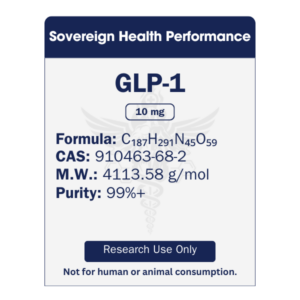The Benefits of Microdosing Semaglutide
Introduction
Semaglutide, a glucagon-like peptide-1 (GLP-1) receptor agonist, is widely recognized for its efficacy in managing type 2 diabetes and obesity. Traditionally administered in higher doses to achieve significant clinical effects, semaglutide is now being explored in lower, “microdosed” amounts for a range of potential benefits beyond its primary indications. Microdosing involves the administration of doses low enough to elicit subtle biological responses without triggering significant side effects. This article delves into the benefits of microdosing semaglutide and its potential applications.

Table of Contents
What is Semaglutide?
Semaglutide mimics the function of GLP-1, an incretin hormone that stimulates insulin secretion, inhibits glucagon release, and slows gastric emptying. These actions help regulate blood glucose levels and promote satiety. Given its effectiveness, semaglutide has been approved for the treatment of type 2 diabetes and chronic weight management under brand names like Ozempic and Wegovy.
Microdosing Semaglutide
Microdosing semaglutide typically involves using doses significantly lower than those prescribed for diabetes and obesity management. While standard therapeutic doses for diabetes can range from 0.5 mg to 1 mg per week and doses for weight management can go up to 2.4 mg per week, microdosing would generally involve doses in the range of 0.05mg to 0.25 mg per week.
These lower doses aim to provide the therapeutic benefits of semaglutide while minimizing potential side effects.
Benefits of Microdosing Semaglutide
1. Enhanced Insulin Sensitivity
Microdosing semaglutide can improve insulin sensitivity, even at lower doses. By enhancing the body’s responsiveness to insulin, microdosing may help individuals with insulin resistance or prediabetes maintain better glycemic control without the pronounced effects associated with higher doses. Improved insulin sensitivity can also aid in weight management, as better insulin function helps regulate fat storage and metabolism.
2. Weight Management
While higher doses of semaglutide are used for significant weight loss, microdosing can offer a subtler approach to weight management. The appetite-suppressing effects of semaglutide can help reduce caloric intake and support gradual, sustainable weight loss. This can be particularly beneficial for individuals looking to manage their weight without the potential side effects of higher doses, such as gastrointestinal discomfort.
3. Cardiovascular Health
Studies have shown that GLP-1 receptor agonists, including semaglutide, have cardiovascular benefits. These include lowering blood pressure, improving lipid profiles, and reducing inflammation. Microdosing semaglutide could provide these cardiovascular benefits with a lower risk of adverse effects, making it a potential strategy for individuals with cardiovascular risk factors.
4. Neuroprotective Effects
Emerging research suggests that GLP-1 receptor agonists may have neuroprotective properties. Semaglutide has been shown to reduce neuroinflammation and oxidative stress, both of which are implicated in neurodegenerative diseases such as Alzheimer’s and Parkinson’s. Microdosing semaglutide might offer a preventive strategy for these conditions by providing neuroprotective benefits without significant side effects.
5. Enhanced Energy Levels
By improving insulin sensitivity and glycemic control, microdosing semaglutide can lead to more stable blood sugar levels. This stability helps prevent the energy crashes associated with blood sugar fluctuations, leading to more consistent energy levels throughout the day. Enhanced energy can improve overall quality of life and support greater physical activity and productivity.
Potential Applications
1. Prevention of Metabolic Disorders
Microdosing semaglutide could be an effective preventive measure for individuals at risk of developing type 2 diabetes or metabolic syndrome. By improving insulin sensitivity and promoting weight management, it can help prevent the onset of these conditions.
2. Adjunct Therapy for Weight Management
For individuals who do not require significant weight loss but seek to manage their weight, microdosing semaglutide can be a supportive therapy. It can help control appetite and promote gradual weight loss without the more intense effects of higher doses.
3. Support for Cardiovascular Health
Microdosing can be beneficial for individuals with cardiovascular risk factors, such as hypertension or dyslipidemia. The cardiovascular benefits of GLP-1 receptor agonists can be leveraged without the higher risks associated with full doses.
4. Cognitive Health
Microdosing semaglutide may be explored as a strategy to support cognitive health and prevent neurodegenerative diseases. Its neuroprotective properties could provide a preventive approach for individuals with a family history or early signs of cognitive decline.
Conclusion
Microdosing semaglutide offers a promising approach to harnessing the benefits of this GLP-1 receptor agonist with a reduced risk of side effects. By improving insulin sensitivity, supporting weight management, enhancing cardiovascular health, and providing neuroprotective effects, microdosing can be a versatile tool in preventive health and wellness strategies. As research continues to explore the full potential of microdosing semaglutide, it may become an integral part of personalized medicine and preventive healthcare.
Featured Research Peptides
-
 GLP-1$115.00 – $229.00
GLP-1$115.00 – $229.00
References
- Holst, J. J., & Vilsbøll, T. (2008). “Incretin hormones – an update.” Scandinavian Journal of Clinical and Laboratory Investigation, 68(3), 60-64.
- Nauck, M. A., & Meier, J. J. (2018). “Incretin hormones: Their role in health and disease.” Diabetes, Obesity and Metabolism, 20(1), 5-21.
- Davies, M. J., et al. (2015). “Efficacy of Liraglutide for Weight Loss Among Patients With Type 2 Diabetes.” JAMA, 314(7), 687-699.
- Marso, S. P., et al. (2016). “Liraglutide and Cardiovascular Outcomes in Type 2 Diabetes.” The New England Journal of Medicine, 375(4), 311-322.
- Marso, S. P., et al. (2016). “Semaglutide and Cardiovascular Outcomes in Patients with Type 2 Diabetes.” The New England Journal of Medicine, 375(19), 1834-1844.
- Li, Y., et al. (2010). “GLP-1 receptor stimulation reduces amyloid-β peptide accumulation and cytotoxicity in cellular and animal models of Alzheimer’s disease.” Journal of Alzheimer’s Disease, 19(4), 1205-1219.
- Hölscher, C. (2014). “First clinical data of the neuroprotective effects of nasal insulin application in patients with Alzheimer’s disease.” Alzheimer’s & Dementia, 10(1), S33-S37.
- Cummings, J. L., et al. (2021). “Effect of semaglutide on cognitive function in patients with type 2 diabetes: Exploratory results from the SUSTAIN 6 cardiovascular outcomes trial.” Diabetes, Obesity and Metabolism, 23(7), 1611-1620.
- Nauck, M. A., & Meier, J. J. (2019). “Incretin-based therapies: Novel developments and clinical implications.” Lancet Diabetes Endocrinol, 7(4), 309-320.
- Wilding, J. P. H., et al. (2021). “Once-weekly semaglutide in adults with overweight or obesity.” The New England Journal of Medicine, 384(11), 989-1002.
- Gerstein, H. C., et al. (2019). “Cardiovascular and Renal Outcomes with Semaglutide in Type 2 Diabetes.” The New England Journal of Medicine, 381(9), 841-851.
- Gejl, M., et al. (2017). “Glucose metabolism in brain and muscle during a hyperinsulinemic-euglycemic clamp. A PET study in healthy young and older adults.” American Journal of Physiology-Endocrinology and Metabolism, 313(3), E343-E353.

